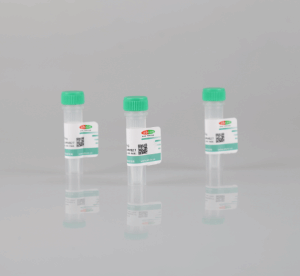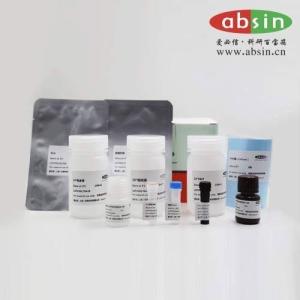
|
- 品牌:爱必信(absin)
- 产地:中国
- 货号:abs135555
- 价格: ¥1500/支
- 发布日期: 2022-04-08
- 更新日期: 2025-12-05
| 产地 | 中国 |
| 品牌 | 爱必信(absin) |
| 货号 | abs135555 |
| 保存条件 | 见爱必信官网 |
| 用途 | |
| 应用范围 | 见爱必信官网 |
| 抗原来源 | |
| CAS编号 | |
| 保质期 | |
| 抗体名 | FABP4 |
| 是否单克隆 | 否 |
| 克隆性 | 见爱必信官网 |
| 靶点 | 见爱必信官网 |
| 适应物种 | 见爱必信官网 |
| 形态 | 见爱必信官网 |
| 宿主 | 见爱必信官网 |
| 标记物 | |
| 包装规格 | 50ug,100ug |
| 纯度 | % |
| 亚型 | 见爱必信官网 |
| 标识物 | 见爱必信官网 |
| 浓度 | 见爱必信官网% |
| 免疫原 | 见爱必信官网 |
| 是否进口 | 否 |
|
公告提醒:爱必信所有产品和服务仅用于科学研究,不用于临床应用及其他用途提供产品和服务(也不为任何个人提供产品和服务)!
抗体描述: 产品名称:Rabbit anti-FABP4 Polyclonal Antibody 产品别名:FABP4抗体 宿主:Rabbit 反应种属:Human;Mouse;Rat 克隆性:Polyclonal Antibody 保存方法:Store at -20 °C for one year. Avoid repeated freeze/thaw cycles 产品描述:Fatty acid binding proteins (FABPs) bind to fatty acids and other lipids to function as cytoplasmic lipid chaperones (1). They participate in the transport of fatty acids and other lipids to various cellular pathways (2). The predominant fatty acid binding protein found in adipocytes is FABP4, also called adipocyte fatty acid binding protein or aP2. FABP4 is also expressed in macrophages (3). FABP4 knockout mice fed a high-fat and high-calorie diet become obese but develop neither insulin resistance nor diabetes, suggesting that this protein might be a link between obesity and insulin resistance and diabetes (4). Mice deficient in both FABP4 and ApoE show protection against atherosclerosis when compared with mice deficient only in ApoE (3). Mice carrying a FABP4 genetic variant exhibit both reduced FABP4 expression and a reduced potential for developing type 2 diabetes and coronary heart disease. A related study in humans indicated a similar pattern, suggesting that FABP4 may be a potential therapeutic target in the treatment of these disorders (1). 用途范围: WB 1:500-1:2000, IHC 1:50-1:200, ELISA(peptide) 1:20000-1:40000
产品信息订购:
|








